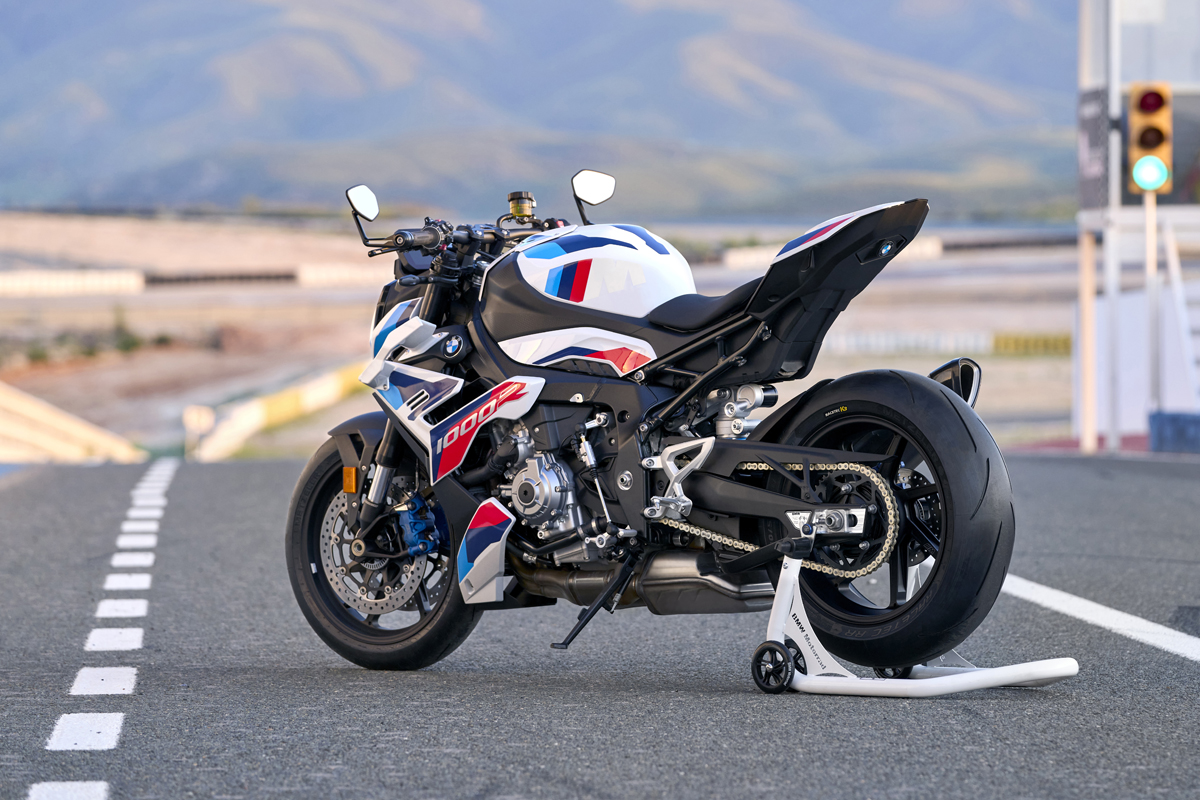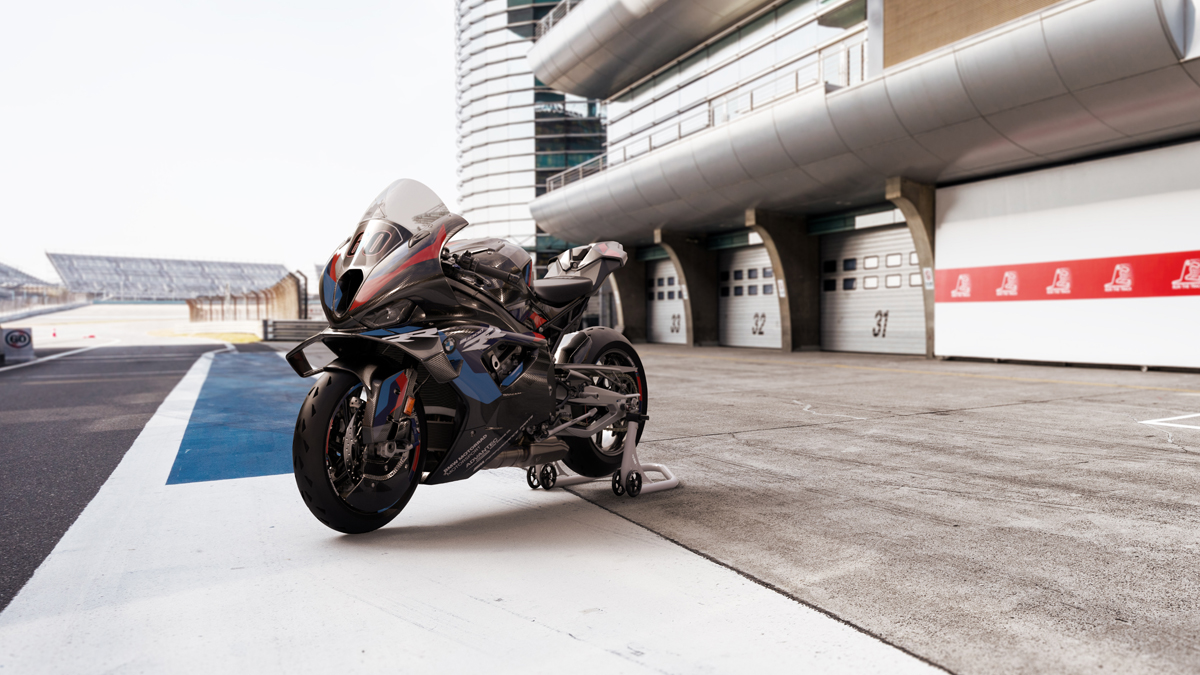
Just how much faster can litre superbikes get? Well, if the new BMW M1000RR is anything to go by, we are looking at an increase of 8km/h, bringing the top speed to 314km/h, up from 306km/h. The amazing thing is that this speed increase has been brought about not by stressing the engine further, but by improvements to the aerodynamic efficiency of the fairing.
The newly designed fairing is made of exposed visible carbon fibre and a higher windscreen offers optimised airflow around the rider. For the first time, this fairing also comes with a particularly light yet very rigid front fairing support made of carbon fibre.
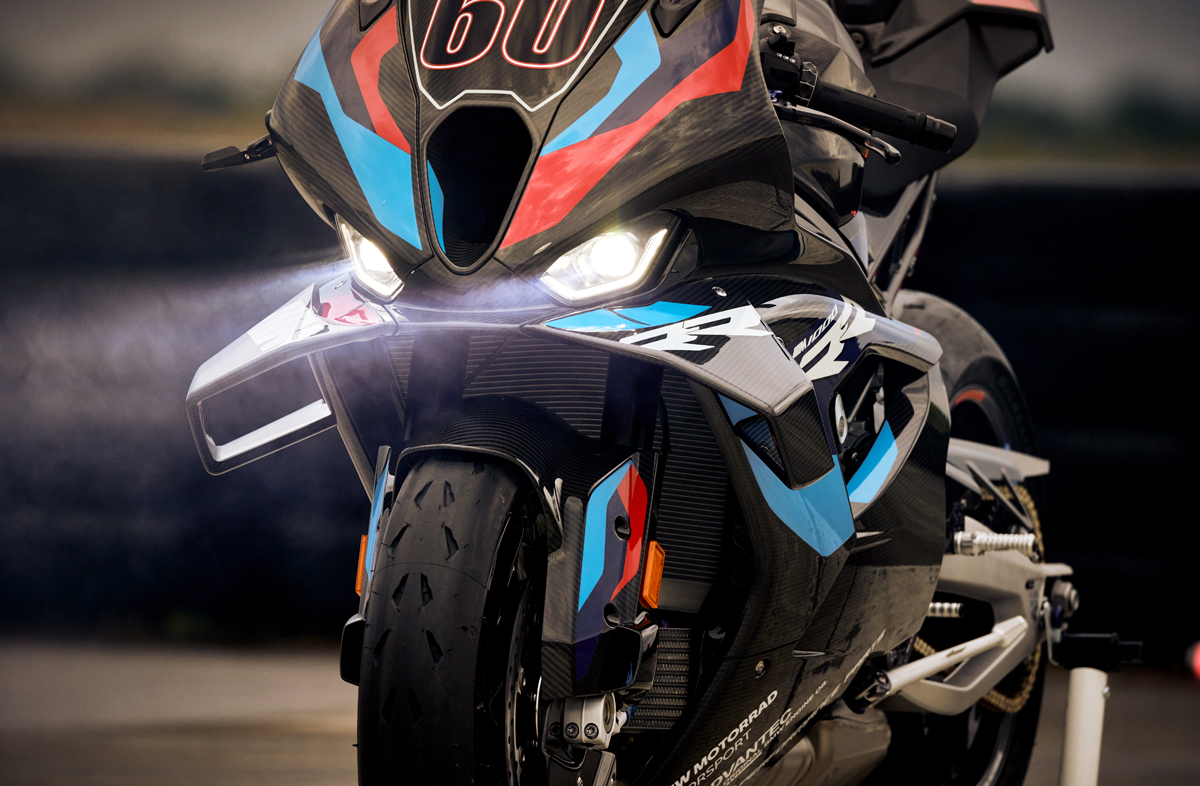
It’s not just the fairing that has received attention. Winglets are now a feature of any self-respecting sports bike and those on the M RR have been revised. They now generate significantly more aerodynamic downforce – both in an upright riding position and when banking.
Another central point in optimising the entire aerodynamics was the area of the front wheel: carbon fibre brake cooling air ducts are fitted. They are integrated into the new front mudguard, which has been optimised for improved airflow around the fork legs and brake callipers.
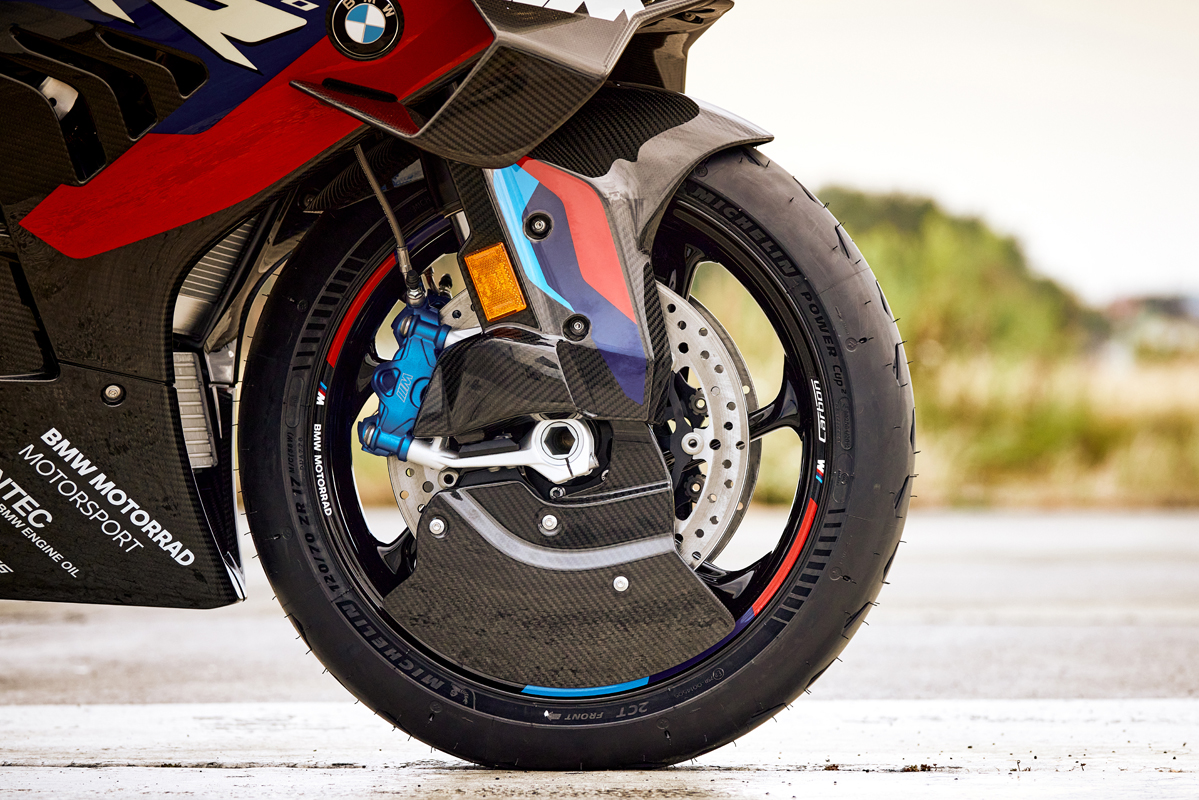
The M Aero Wheel Covers, which are also made of visible carbon fibre lower air resistance even further – especially at speeds above 250 km/h.
The engine retains its 212bhp at 14,500rpm output and torque figure of 113Nm (83.3 foot pounds) at 11,000rpm.
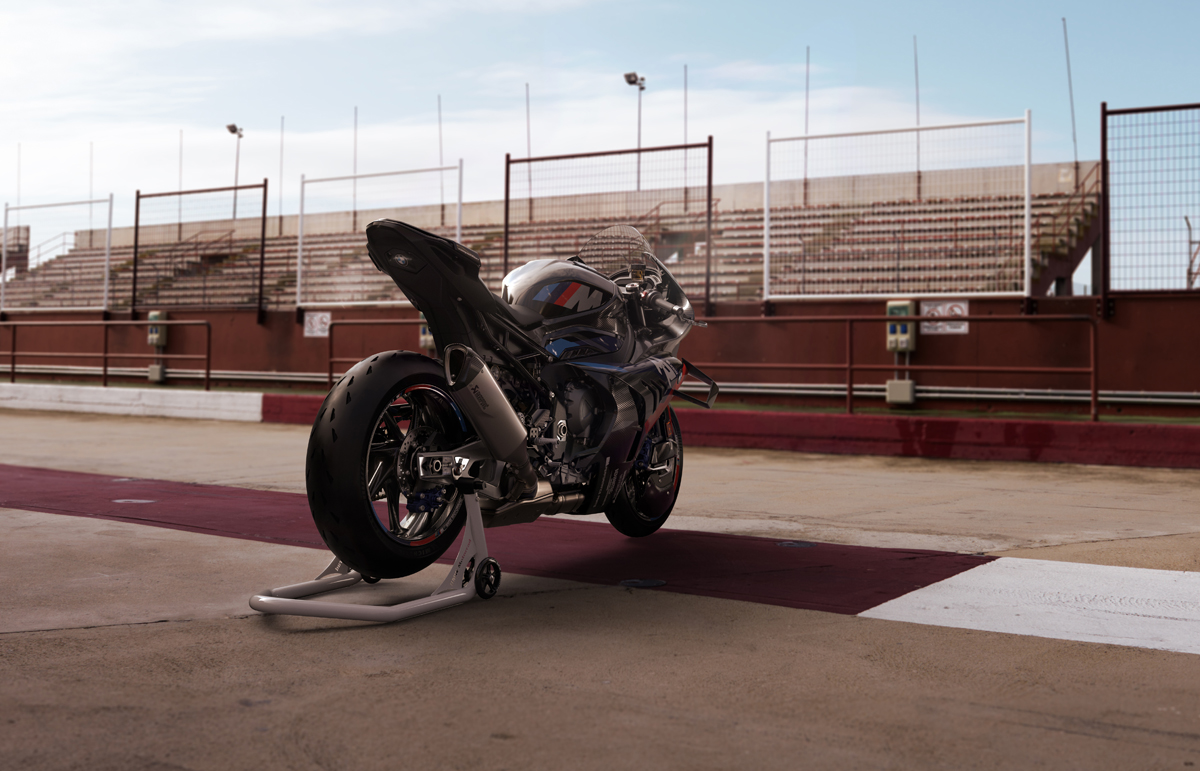
The naked M1000R has also received upgrades, again mainly involving aerodynamics. The new M R was given winglets in the area of the front side panels with the aim of achieving the best possible riding stability at high speeds.
The winglets provide an increase in front wheel load of 11 kg at 220 km/h due to aerodynamic downforce. The BMW Motorrad developers’ countered the slightly increased aerodynamic resistance caused by the small additional frontal area and shape of the M winglets with a correspondingly designed wind deflector in front of the instrument cluster.
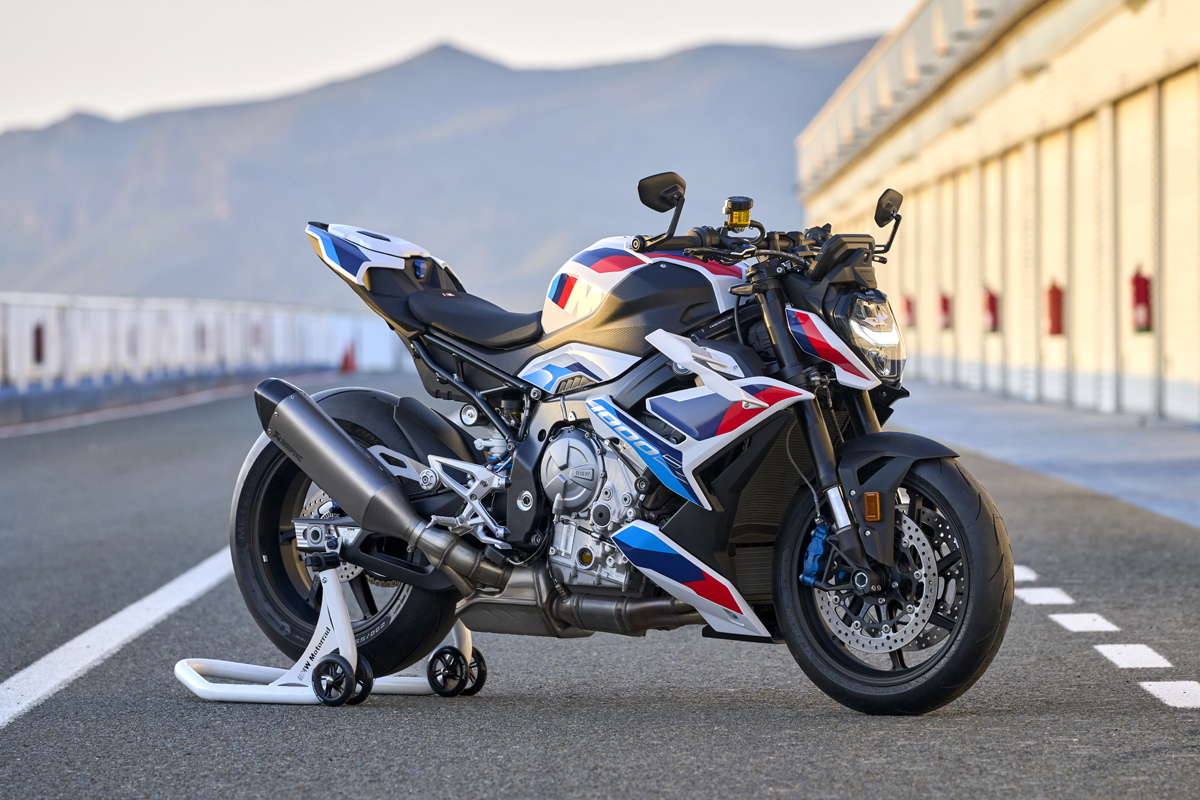
The engine is based on that in the M1000RR and has a peak power output of 210bhp at 13,750rpm. This is a frankly incredible increase of 45bhp over the engine in the S1000R. Torque output remains the same as the M RR at 113Nm (against 114Nm at 9,250rpm for the S1000R). The gearing has been shortened for every gear between second and sixth for ridiculously explosive acceleration.
In both the M1000RR and M1000R, the engine features BMW’s Shiftcam variable valve timing technology.
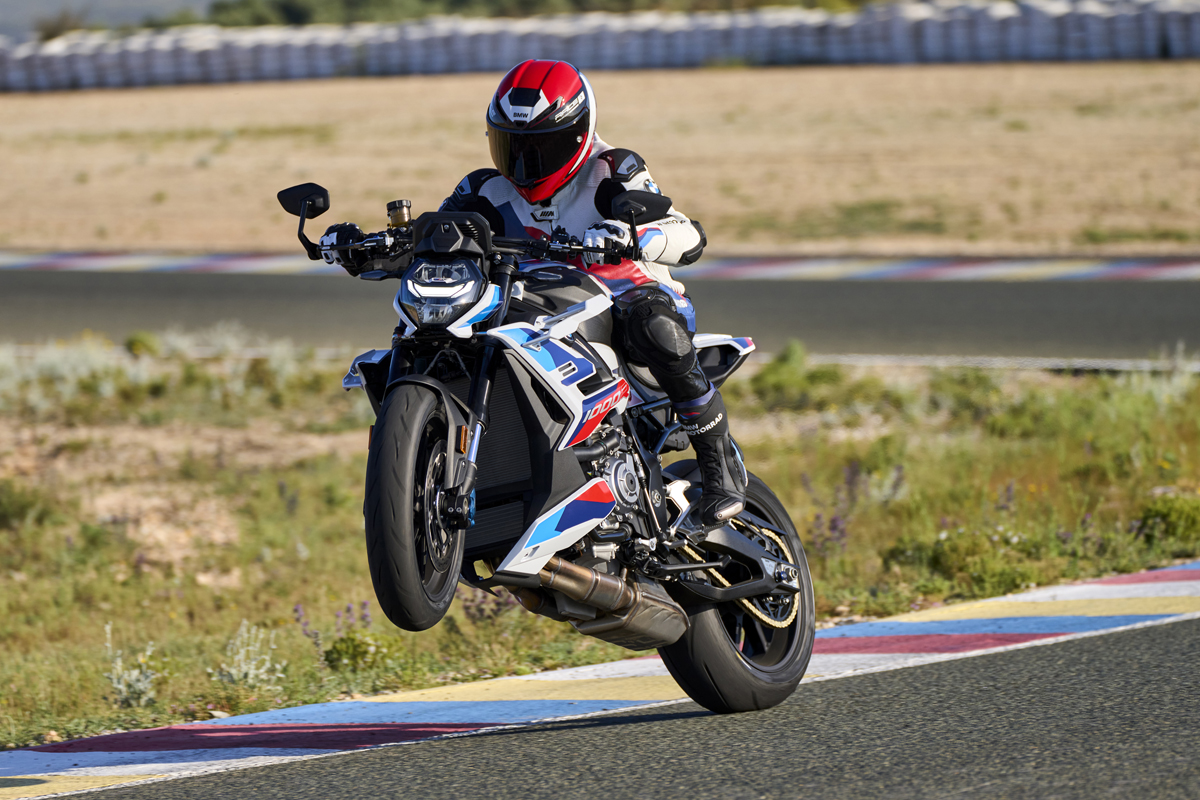
If the new M R in standard trim is still not enough for you, the M Competition Package offers a mix of refined components. In addition to the Blackstorm metallic / M Motorsport colour scheme, the M Competition package includes M Carbon wheels, M rider footrest system, M Carbon parts such as rear wheel cover and chain guard, front wheel cover, tank covers, airbox cover with tapes, wind deflector, sprocket cover, the M pillion package as well as the M pillion cover and a milled, fully adjustable M rider footrest system.
Despite having entered the superbike class over 20 years later than rivals from Japan and Italy, BMW has consistently sat at the head of the table and, with the latest revisions, it looks likely that its position is secure.
